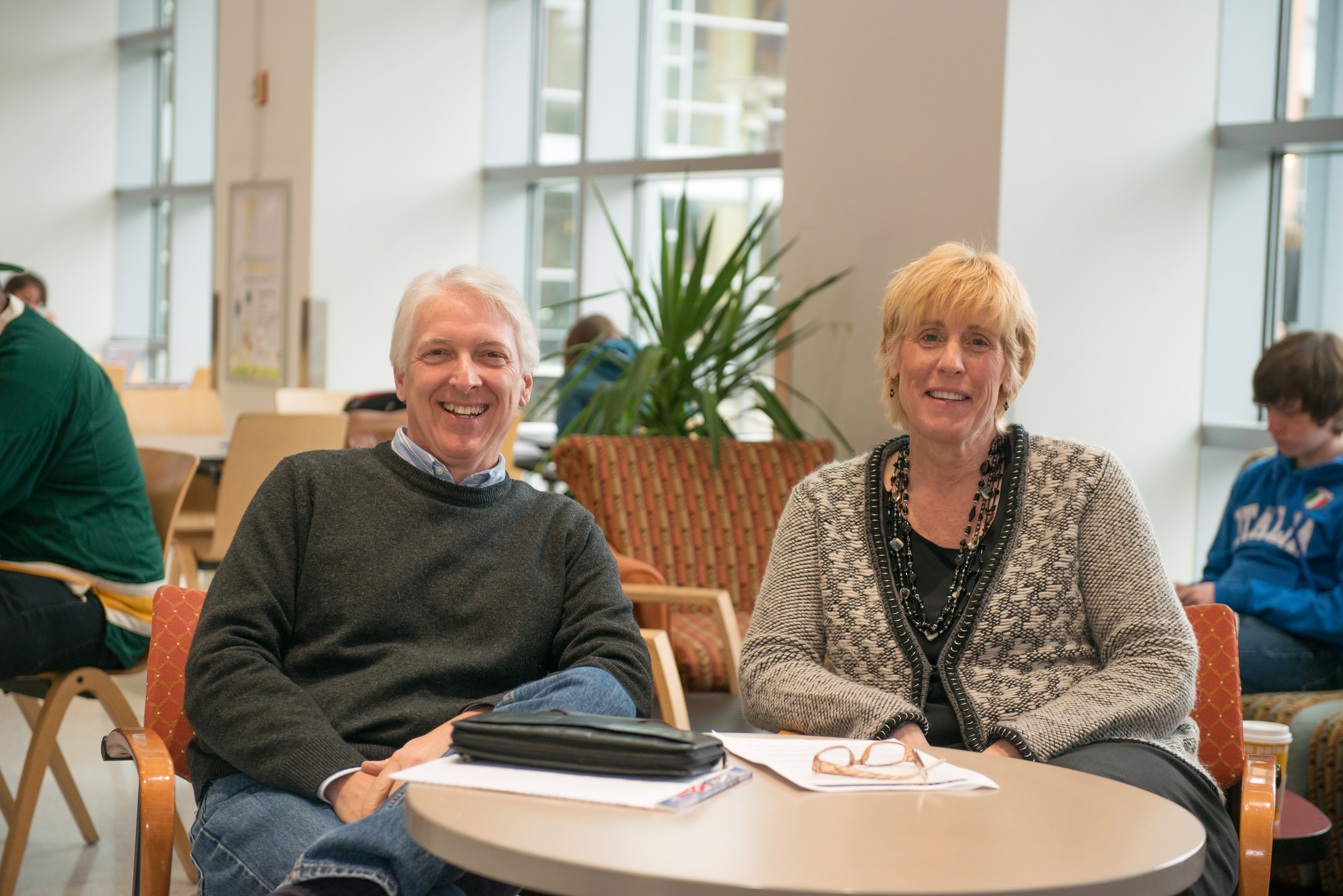Our UMBC: A Strategic Plan for Advancing Excellence is founded on a broadly inclusive process. With campus input, the Strategic Planning Steering Committee identified four areas widely viewed as drivers of future success for UMBC: The Student Experience, Innovative Curriculum and Pedagogy, Collective Impact in Research, Scholarship, and Creative Achievement, and Community and Extended Connection. A strategy group will explore and recommend goals for each area, and will recommend metrics to assess how well we are addressing our objectives.
This is the first in a series of interviews with the co-chairs of each focus area.
 The primary goal of The Student Experience Strategy Group is examining ways to create vibrant, exceptional and comprehensive undergraduate and graduate student experiences that integrate in- and out-of-classroom learning to prepare graduates for meaningful careers and civic and personal lives. Student Experience Strategy Group Co-Chairs Devin Hagerty, professor of political science and program director of global studies, and Kim Leisey, associate vice president of student affairs, believe that students continue to prioritize a strong sense of community and belonging, a theme that will help inform their work as co-chairs.
The primary goal of The Student Experience Strategy Group is examining ways to create vibrant, exceptional and comprehensive undergraduate and graduate student experiences that integrate in- and out-of-classroom learning to prepare graduates for meaningful careers and civic and personal lives. Student Experience Strategy Group Co-Chairs Devin Hagerty, professor of political science and program director of global studies, and Kim Leisey, associate vice president of student affairs, believe that students continue to prioritize a strong sense of community and belonging, a theme that will help inform their work as co-chairs.
Both Hagerty and Leisey bring important perspectives to the Strategy Group research, which will examine the roles of safety, community and belonging; preparation in and out of the classroom; the impact of diversity; participation in global citizenship; delivery of services; and faculty and staff infrastructure.
While Hagerty’s focus is academics and Leisey’s is student affairs, the collaborative nature of the campus helps them to see the big picture and hear from all members of the community. As former chair and now program director, Hagerty’s work centers on the classroom experience, but he also has worked with students in a variety of settings, including bringing workshops into residence halls. “I’ve seen all of the student issues, both academic and personal, and the relationships I have across campus have been helpful to that experience,” he explains. On the other hand, although Leisey’s work focuses on both undergraduate and graduate students, she also works closely with faculty and staff across the campus.
As they begin their work as co-chairs, Hagerty and Leisey say they are reflecting on how the campus and the student experience have changed since they first came to UMBC 13 and 23 years ago, respectively. UMBC has grown into a nationally and internationally recognized institution, and an inclusive strategic planning process is critical to understanding the needs of its students and the role the university plays in a rapidly changing world. Both feel it is important to make sure students feel they are a part of a community, and are connected with and supported by the institution.
“I’ve worked with both undergraduate and graduate students and I get a lot of input from them,” says Leisey. “For me, co-chairing this group is an opportunity to share that input and focus on what we want UMBC to look like in the next few decades – what exists now and what’s missing. In doing that, we also have to project what’s ahead in the world and the impact that will have both in and out of the classroom.”
Hagerty agrees, sharing, “This also is a good opportunity to audit ourselves as we are proactive, creative and innovative in keeping up with the student body. There’s a lot we do well, and it’s good to take a fresh look to make sure we’re doing as well as we think. We try to excel at everything, and we want to stay on the map without losing the liberal arts teaching. We want to know how that feels for students: How do they interact with all of the different parts of the campus and what kind of experience do they have?”
UMBC is well known for its diversity. Leisey explains that one challenge is taking advantage of that diversity in helping people connect and provide experiences that help students learn about one another – and find commonalities among the differences. Hagerty adds that it is important to understand the student experience as a whole, and how it transforms and prepares students for the future. “The challenges students have now are preparing them to be global citizens and professionals.”
While the role of technology has grown exponentially, both feel that students may be missing more face-to-face connections. “I’d like to better understand the role of technology [in the student experience], but I have a hunch that, although this generation is connected technologically, they miss just being with people,” says Leisey.
Hagerty and Leisey would like to receive input on the student experience from students and colleagues across the campus, and look forward to meeting with focus groups during the strategic planning process. They also welcome questions and comments from the campus. You can contact them at dhagerty@umbc.edu and leisey@umbc.edu.
